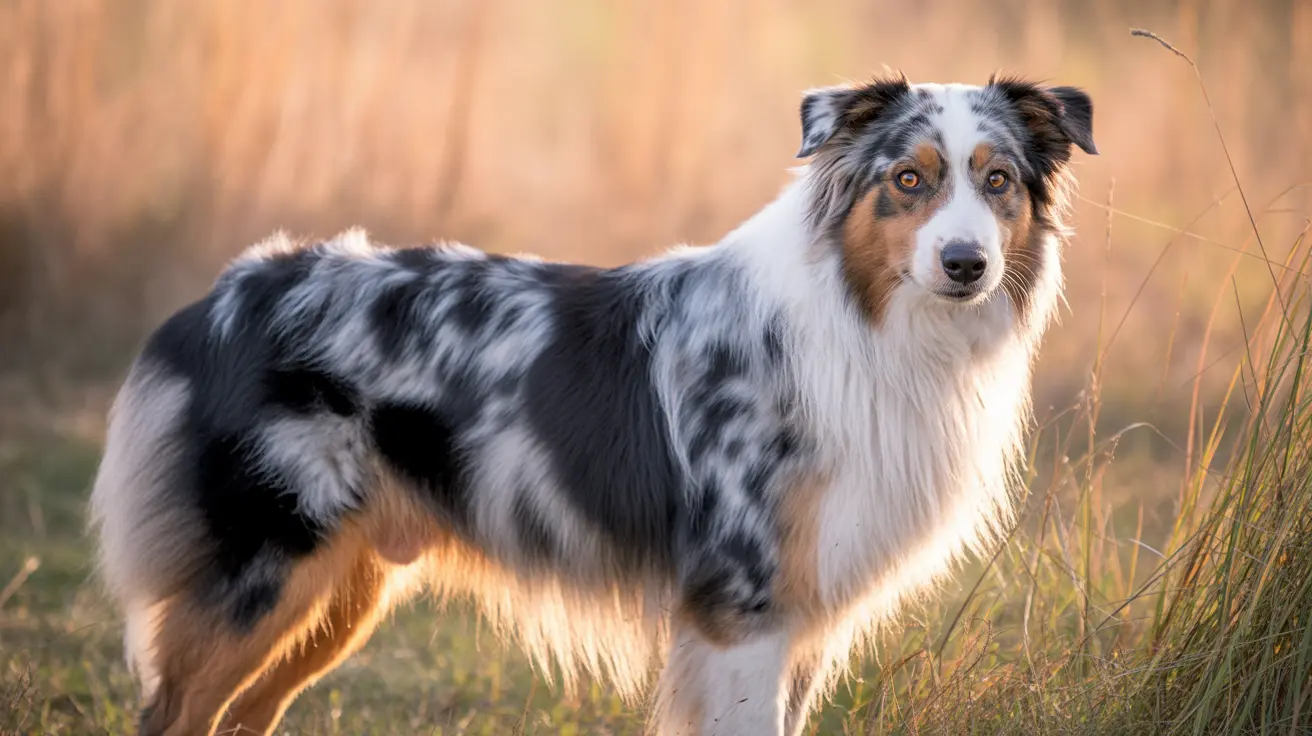What is Merle Coloring in Dogs?
Merle dog color is one of the most striking and distinctive coat patterns found in canines. This unique pattern creates a mottled or dappled effect, where patches of darker pigment appear against a lighter background, creating a marbled appearance that can be truly mesmerizing.
What makes merle particularly fascinating is not just its visual appeal, but also its complex genetic nature. The pattern results from a specific mutation in the PMEL17 gene, which affects how pigment is distributed throughout the dog's coat, creating that characteristic spotted or splotched appearance.
The Genetics Behind Merle Coloring
The merle pattern is caused by a genetic mutation that affects how melanin (pigment) is distributed in a dog's coat. This inheritance pattern is what geneticists call "semi-dominant," meaning that one copy of the merle gene creates the classic pattern, while two copies can lead to health complications.
Different variations of merle exist, including:
- Blue merle (diluted black base coat)
- Red merle (diluted liver/brown base coat)
- Cryptic or phantom merle (hidden pattern)
- Harlequin merle (primarily seen in Great Danes)
Common Merle Dog Breeds
Several popular dog breeds naturally carry the merle gene, including:
- Australian Shepherds
- Border Collies
- Dachshunds (called "dapple" in this breed)
- Great Danes
- Catahoula Leopard Dogs
- Rough and Smooth Collies
- Cardigan Welsh Corgis
- Shetland Sheepdogs
Physical Characteristics and Features
Merle dogs often display several distinctive physical characteristics beyond their coat pattern. The most notable feature is their eyes, which can be strikingly blue or even different colors (heterochromia). Their nose leather and paw pads may also show mottling or pink spots.
The base coat color can vary significantly, creating different merle variations that range from subtle to dramatic in appearance. Some merles may also have white markings, which can create even more complex and beautiful patterns.
Health Considerations for Merle Dogs
While the merle pattern is beautiful, it's important to understand the potential health implications, particularly when two merle dogs are bred together. Double merle dogs (those inheriting the merle gene from both parents) can face serious health challenges, including:
- Deafness (partial or complete)
- Vision problems
- Increased sensitivity to sunlight
- Other developmental issues
Responsible Breeding Practices
Due to the health risks associated with double merle breeding, responsible breeders follow strict guidelines:
- Never breeding two merle dogs together
- Genetic testing before breeding
- Careful consideration of breeding partners
- Following breed club guidelines and regulations
Frequently Asked Questions
What is the genetic cause of the merle coat color in dogs?
The merle coat color is caused by a mutation in the PMEL17 gene, which affects how melanin (pigment) is distributed throughout the dog's coat. This mutation creates the characteristic mottled or dappled appearance.
How does breeding two merle dogs affect their puppies' health?
Breeding two merle dogs creates a 25% chance of producing "double merle" puppies, which often face serious health issues including deafness, vision problems, and other developmental challenges. This practice is strongly discouraged by responsible breeders.
Why do merle dogs often have blue or odd-colored eyes?
The merle gene affects pigmentation not just in the coat but also in the eyes. This can result in blue eyes or heterochromia (different colored eyes) because the gene influences melanin production in the iris.
Can a dog have the merle gene without showing the merle coat pattern?
Yes, these are known as "cryptic" or "phantom" merles. They carry the merle gene but show little to no visible merle pattern. This is why genetic testing is crucial before breeding dogs from merle lines.
Which dog breeds are known to commonly have the merle coat pattern?
Common merle breeds include Australian Shepherds, Border Collies, Dachshunds, Great Danes, Catahoula Leopard Dogs, and various Collie breeds. Each breed may have specific terms or standards for their merle patterns.
Conclusion
The merle dog color pattern is a fascinating example of canine genetics, creating some of the most beautiful and unique coat patterns in the dog world. While these dogs are undeniably striking, responsible ownership and breeding practices are crucial to ensure the health and well-being of future generations.






